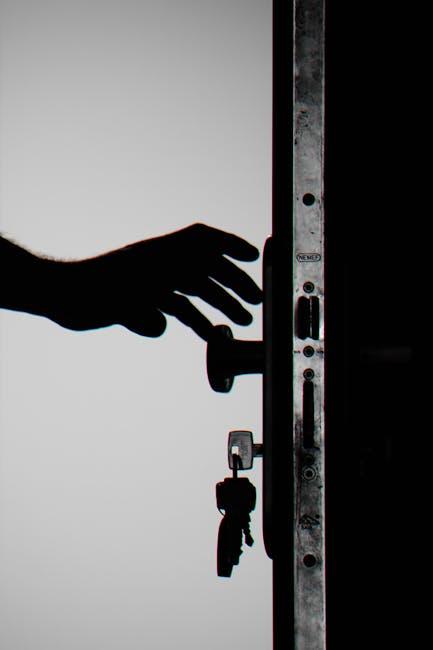When it comes to safeguarding our homes, understanding the tactics of those who seek to breach our personal sanctuaries is the first line of defense. Burglars, like skilled navigators, often exploit predictable routes-doors left ajar, windows overlooked, and hidden vulnerabilities that invite unwelcome entry. By uncovering the most common entry points used by intruders, we can illuminate the shadows where risk lurks and empower ourselves with practical steps to fortify every threshold. In this article, we explore these familiar access points and offer thoughtful, achievable solutions to help secure your home, transforming it from a target into a fortress of peace and security.
Table of Contents
- Common Vulnerabilities in Doors and How to Fortify Them
- Window Entry Tactics Burglars Exploit and Protective Measures
- Garage and Side Access Points Often Overlooked by Homeowners
- Enhancing Outdoor Security to Deter Intruders from Approaching
- Smart Technology Solutions to Monitor and Secure Entryways
- Q&A
- Wrapping Up
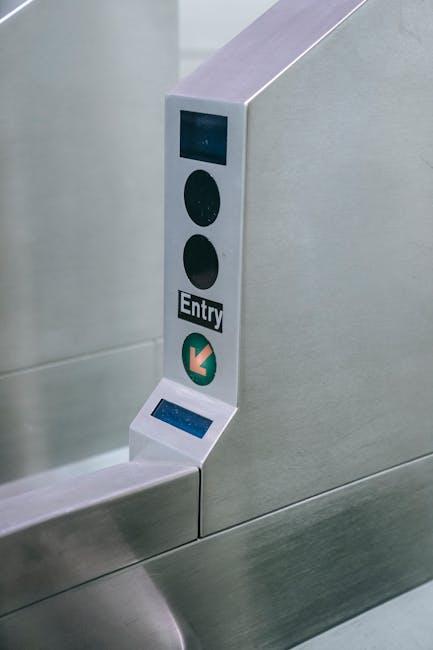
Common Vulnerabilities in Doors and How to Fortify Them
Doors are often the first line of defense but can be surprisingly vulnerable due to several common flaws. Weak door frames and improper installation make it easier for burglars to force entry. Lower-quality locks, especially spring bolt varieties, offer minimal resistance compared to deadbolts or smart locks. Glass panels adjacent to doors also provide an enticing target; breaking the glass can allow burglars to reach in and unlock the door from the inside. Another overlooked vulnerability lies in hinges-poorly secured or exposed hinges can be tampered with to remove the door altogether.
To fortify your doors effectively, consider implementing these key upgrades:
- Reinforced door frames: Use steel or solid wood frames to resist kicking and prying.
- High-security locks: Install deadbolts with at least a 1-inch throw bolt or smart locks with advanced encryption.
- Security strike plates: Replace standard plates with heavy-duty ones secured by 3-inch screws anchored into the wall studs.
- Shatter-resistant glass: Replace or overlay glass panels with laminated or tempered safety glass.
- Concealed hinges or security studs: Prevent hinge tampering by using non-removable pins or hinge bolts.
| Vulnerability | Recommended Solution | Benefit |
|---|---|---|
| Weak Door Frame | Steel Reinforcement | Resists Kick-in Attacks |
| Standard Locks | Grade 1 Deadbolt | Higher Lock Pick Resistance |
| Glass Panels | Laminated Glass | Prevents Easy Break-in |
| Exposed Hinges | Security Hinges | Stops Door Removal |
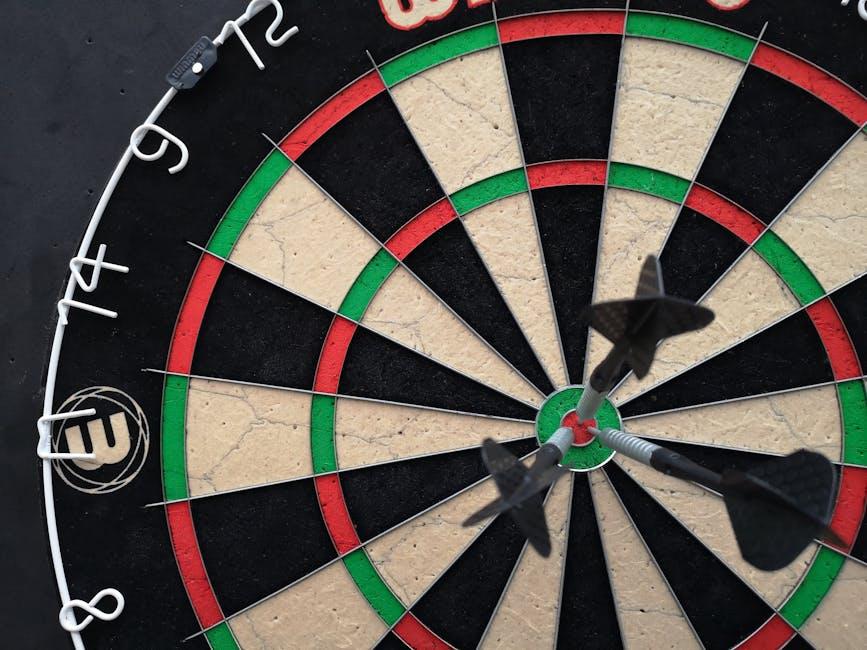
Window Entry Tactics Burglars Exploit and Protective Measures
Burglars often exploit windows as an entry point due to their relative accessibility and the potential for overlooking security measures. Common tactics include targeting windows left unlocked or those with easily compromised locks, especially on ground floors or basements. They also look for windows obscured by shrubs or heavy curtains, as these provide cover from prying eyes. Sliding windows and old, single-pane glass are particularly vulnerable, as they can be forced open or broken with minimal noise and effort. Understanding these vulnerabilities is key to reinforcing your home’s defenses.
Protective measures focus on both deterrence and reinforcement. Installing window locks, security bars, or reinforced glass can significantly reduce the risk of a break-in. In addition, motion-activated exterior lighting near windows can deter burglars by exposing any movement. Regular maintenance, such as trimming back foliage that obstructs views and ensuring all windows have intact screens and seals, further strengthens your home’s security.
| Window Type | Common Weakness | Recommended Security Measures |
|---|---|---|
| Sliding Windows | Lift out of tracks or force open | Window pins, track locks |
| Sash Windows | Old locks or rotten frames | Secondary locks, window alarms |
| Basement Windows | Low visibility, broken glass | Grills, reinforced glass |
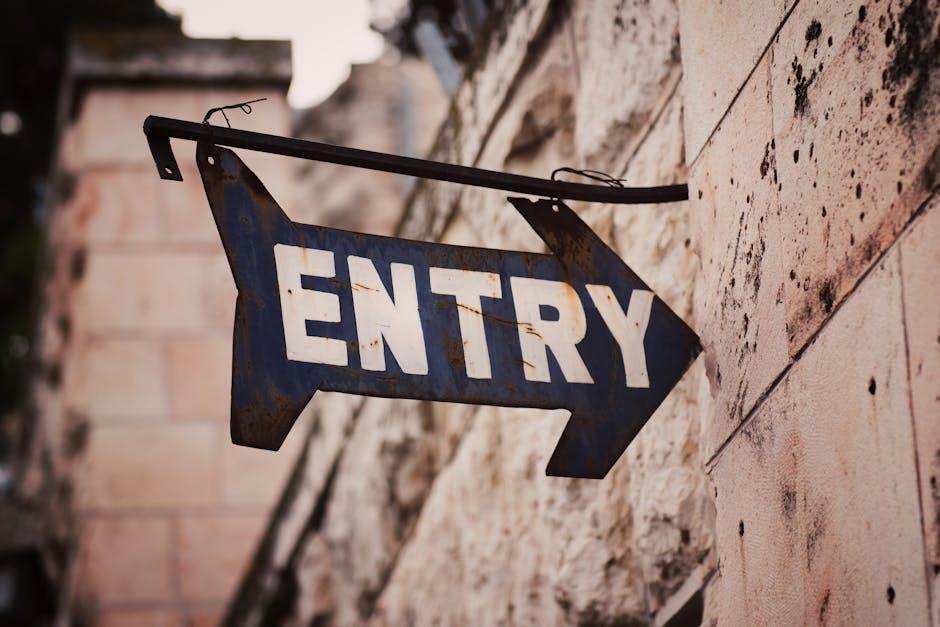
Garage and Side Access Points Often Overlooked by Homeowners
When assessing your home’s security, many homeowners focus on front doors and windows, unintentionally neglecting the garage and side entry points. These areas often serve as easy access routes for intruders, especially when left unsecured or poorly lit. Garage doors can be vulnerable if they lack modern locking mechanisms or are simply left open. Similarly, side gates or doors tucked away from view provide burglars with the cover they need to attempt a break-in unnoticed. Enhancing visibility with motion-activated lighting and ensuring robust locks are in place can dramatically reduce these hidden risks.
To effectively protect these overlooked areas, consider incorporating a combination of mechanical and electronic security measures. For instance, reinforce garage doors with deadbolt locks or security bars, and install smart locks on side doors that alert you to any unauthorized attempts. Regular maintenance checks can also prevent vulnerabilities caused by wear and tear. Below is a quick reference table highlighting common weak points and suggested security upgrades:
| Entry Point | Common Weakness | Recommended Security Upgrade |
|---|---|---|
| Garage Door | Old locks, manual openers | Smart locks, deadbolts, security alarms |
| Side Gate | Unlatched, no visibility | Heavy-duty padlocks, motion lights |
| Side Door | Basic locks, no reinforcement | Reinforced frames, camera monitoring |
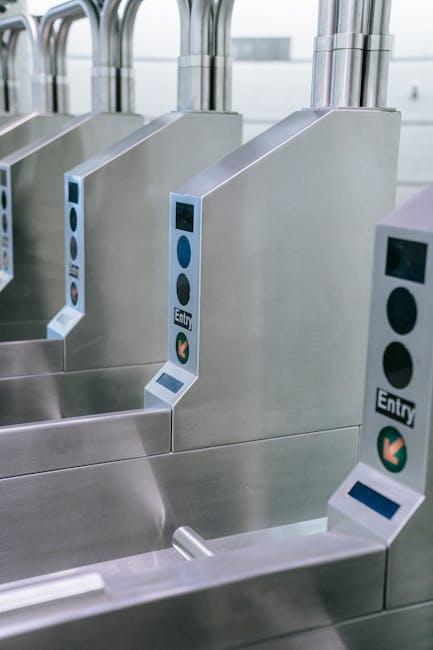
Enhancing Outdoor Security to Deter Intruders from Approaching
Creating a formidable barrier between your home and potential intruders begins with thoughtful outdoor security enhancements. Illuminating the perimeter using motion-activated lights not only exposes unwelcome visitors but also sends a clear message that the property is well-monitored. Complement these lights with strategically placed security cameras that cover blind spots around entryways and vulnerable windows. Additionally, installing sturdy fencing with secure locks can help restrict access to less visible parts of your yard, making it harder for burglars to scope your property undetected.
Soft landscaping can also play a surprising role in deterring intruders. Sharp-edged plants like holly bushes and thorny roses planted beneath windows create natural obstacles, discouraging attempts to enter through lower-level openings. Consider enhancing paths and driveways with gravel or other noise-making materials to alert you to footsteps approaching your home. Together, these methods create layers of protection that work in harmony to keep intruders at bay and provide lasting peace of mind.

Smart Technology Solutions to Monitor and Secure Entryways
Modern advancements have revolutionized how we secure our homes, offering a range of smart technology solutions that provide real-time monitoring and enhanced protection for every entryway. From smart locks that allow remote control access to video doorbells offering crystal-clear visuals of visitors, these tools eliminate guesswork and give homeowners complete control over who enters their space. Integration with smartphone apps means you can lock or unlock doors remotely, receive instant alerts to suspicious activities, and even communicate directly through two-way audio systems, all from the palm of your hand.
To elevate security further, consider pairing these devices with smart sensors and automated lighting systems. Motion detectors can activate lights and cameras when movement is detected, deterring potential burglars before they get close. Below is a quick comparison of popular smart entryway devices to help tailor your home security setup:
| Device Type | Key Feature | Ideal For |
|---|---|---|
| Smart Lock | Remote access & keyless entry | Front & back doors |
| Video Doorbell | Live video & visitor alerts | Main entrance |
| Motion Sensor | Triggered lighting & alarms | Garage & side doors |
| Automated Lighting | Scheduled & motion-activated lights | Driveways & pathways |
- Regular System Updates: Ensure all devices have the latest firmware for optimal security features.
- Integration: Link all smart home security devices into a single app for centralized management.
- Backup Power: Invest in battery backups to keep security systems operational during outages.
Q&A
Q: What are the most common entry points burglars use to break into homes?
A: Burglars typically target easy and accessible entry points such as front doors, back doors, first-floor windows, sliding glass doors, and garage doors. These spots offer quick access and are often less securely reinforced than others.
Q: Why do burglars prefer entry points like front and back doors?
A: Front and back doors provide direct access into a home’s main living areas. They are frequently left unlocked or with weak locks, making them the path of least resistance for intruders.
Q: Are windows really a common threat for home break-ins?
A: Absolutely. First-floor windows and those hidden from street view are particularly vulnerable. Burglars look for windows that are left open, unlocked, or have old, easily forced latches.
Q: How can I better secure my front and back doors against burglaries?
A: Use high-quality deadbolt locks, reinforce door frames with metal strike plates, and consider installing a peephole or video doorbell. Additionally, ensure doors are solid wood or metal rather than hollow-core.
Q: What’s the best way to protect sliding glass doors?
A: Sliding doors should have sturdy locks and a security bar or rod placed in the track to prevent forcing them open. Window film can also strengthen the glass, making it harder to break.
Q: How can I secure windows to reduce the risk of break-ins?
A: Install window locks, reinforce glass with security film, and consider using window sensors or alarms. Planting thorny bushes beneath ground-level windows also adds a natural deterrent.
Q: Is the garage really a common entry point for burglars?
A: Yes, garages often contain tools that can aid entry and sometimes provide internal access to the home. Keep garage doors secured with strong locks and ensure the door connecting the garage to the house has a solid-core door with a deadbolt.
Q: Are there any modern technologies to help secure entry points?
A: Certainly. Smart locks, surveillance cameras, motion sensor lights, and alarm systems can all enhance the security around your home’s entry points, providing real-time alerts and deterrence.
Q: What simple everyday habits can improve home security at entry points?
A: Always lock doors and windows, don’t hide spare keys outside, use curtains or blinds to block views at night, and maintain good outdoor lighting. These small steps can significantly reduce vulnerability.
Q: How important is landscaping in securing entry points?
A: Very important! Trim shrubs and trees near doors and windows to eliminate hiding spots. Strategic landscaping creates natural barriers, increasing visibility and decreasing cover for potential intruders.
With awareness and proactive measures, securing your home’s most common entry points can turn the tables on burglars, making your home a fortress of safety.
Wrapping Up
In the battle to keep your home safe, understanding where burglars are most likely to strike is your first line of defense. From unlocked doors to overlooked windows, these common entry points serve as silent invitations – but with the right measures, you hold the power to close them firmly. Securing your home isn’t just about locks and alarms; it’s about cultivating awareness and taking proactive steps every day. By shining a light on these vulnerabilities, you transform your house from a target into a fortress. After all, peace of mind begins with knowing you’ve done everything possible to protect what matters most.


